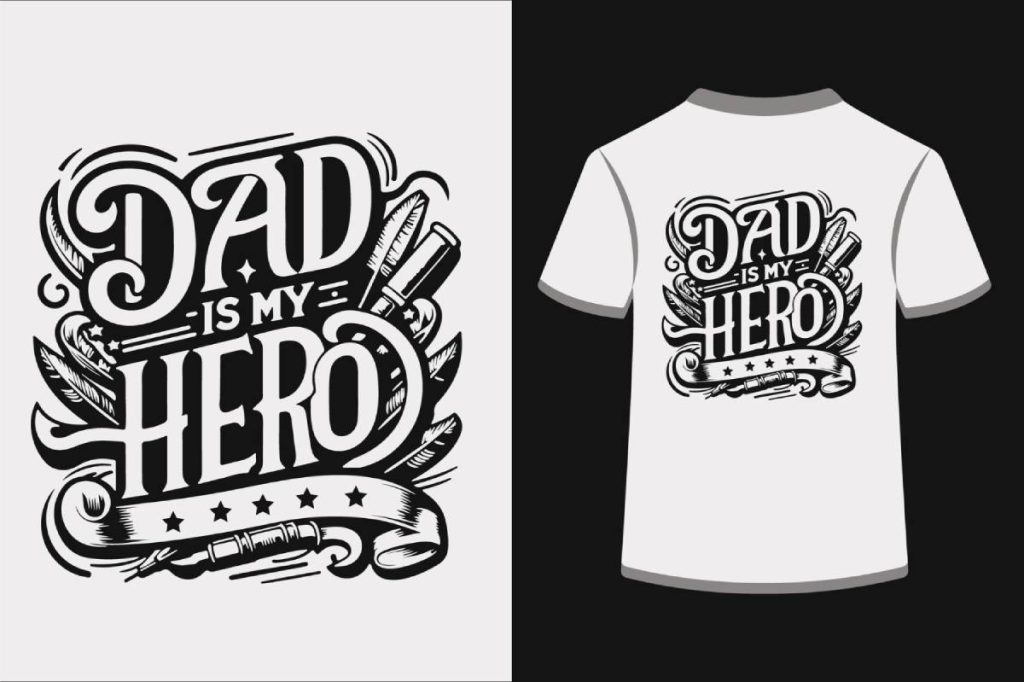DTF transfers, or Direct-to-Film transfers, represent a revolutionary method for transferring vibrant designs onto various fabrics. This advanced printing technique uses high-quality inks and specialized film to produce stunning, durable prints that are perfect for custom apparel and promotional products. By mastering DTF transfer techniques, you can significantly enhance the appearance and longevity of your prints, ensuring they stand out in a competitive market. In this guide, we will delve into the fundamentals of DTF ink quality, heat press settings, and other essential aspects to help you achieve perfection in your transfers. Whether you’re a hobbyist or a business owner, understanding these concepts will be vital in elevating your printing projects.
Direct-to-Film printing, commonly referred to as DTF transfers, is gaining popularity due to its ability to create high-quality designs with remarkable color accuracy and durability. This innovative method involves a unique process where inks are printed onto a special film before being transferred to fabric using heat, offering a seamless alternative to traditional printing techniques. By exploring various DTF transfer methods and optimizing your DTF heat press settings, you can unlock the full potential of this technology. The intricate details of inks, pressure applications, and curing times all play a pivotal role in perfecting your transfer outcomes. As you navigate this dynamic field, you’ll discover a wealth of resources to support your creative journey!
Understanding DTF Transfer Techniques
DTF transfer techniques revolve around the innovative process of Direct-to-Film printing, where designs are printed onto a special film and then transferred onto fabric using heat and pressure. The essence of this method lies in the ability to create intricate and vibrant graphics that are durable and resistant to fading. By grasping the fundamentals of these techniques, you can significantly enhance the quality of your transfers, ensuring that each print reflects professionalism and expertise.
A key aspect of DTF transfer techniques involves understanding the heat press settings and pressure necessary to achieve optimal adhesion. Different materials react uniquely to heat; thus, knowing how to adjust your heat press is vital. Factors such as temperature, pressure, and pressing time all contribute to the success of your DTF transfer, eliminating common pitfalls like uneven application or print lifting.
Choosing the Right DTF Ink Quality
The quality of your DTF ink can significantly influence the outcome of your transfer projects. High-quality inks not only produce better color saturation but are also designed to withstand the rigors of washing and handling. When selecting inks for DTF printing, look for brands that are renowned for their consistency and performance across different fabric types. This attention to ink quality can lead to vibrant prints that maintain their visual appeal over time.
Additionally, understanding the specific characteristics of DTF ink will allow you to optimize your printing process further. Some inks are formulated specifically for performance with various DTF films and can offer advantages such as faster cure times or better adherence to the substrate. Experimenting with different inks will help you find the best options for your specific projects.
Optimizing Your DTF Heat Press Settings
To achieve the best results with DTF transfers, understanding how to optimize your heat press settings is crucial. The recommended temperature range for most DTF transfers typically sits between 320°F and 350°F. However, this can vary based on the fabric being used. Carefully calibrating your heat press will ensure that you apply consistent heat, which is pivotal in making the design adhere appropriately to the fabric.
Furthermore, timing is equally important; a pressing time of around 10-15 seconds is standard. Allowing for a cold peel after pressing enhances the durability and clarity of the print. Regularly checking and adjusting the pressure settings on your heat press can prevent issues such as insufficient adhesion or uneven transfers, ensuring each project is executed flawlessly.
Mastering the Post-Transfer Care for DTF Prints
The longevity and appearance of your DTF prints rely heavily on proper post-transfer care. After a transfer is complete, it’s essential to follow optimal washing techniques, such as washing garments inside out in cold water. This method protects the print from abrasion during the wash cycle, ensuring vibrancy remains intact. Gentle detergents should also be used to prevent color fading.
Allowing sufficient curing time for the inks before washing plays a pivotal role in the overall durability of the print. By waiting at least 24 hours before the first wash, you can ensure that the transfer fully adheres to the fabric. Moreover, air drying is often recommended over machine drying to preserve the quality of the print, ensuring your designs last as long as the garment itself.
Testing and Experimenting with DTF Materials
One of the most effective ways to refine your DTF transfer process is through continuous testing and experimentation with various materials and settings. Keeping a detailed log of different combinations allows you to assess what works best for your specific setup. This documentation will help you identify successful configurations that yield the best quality prints consistently.
Additionally, don’t shy away from experimenting with new substrates and different types of DTF film. Each combination can produce varying results, and through exploration, you may discover unique techniques that enhance your printing capabilities. Collaborating with peers or engaging in community discussions can also provide fresh insights and inspire novel approaches to DTF printing.
Engaging with the DTF Community for Strategies and Insights
Engagement with the DTF printing community can be a treasure trove of information, offering strategies and insights that can help you perfect your transfer process. Online forums, social media groups, and local printing associations often host discussions that cover a broad range of topics related to DTF techniques, equipment, and troubleshooting. Connecting with other DTF enthusiasts provides a supportive atmosphere where knowledge and experiences are shared.
Furthermore, numerous tutorials and instructional videos available across different platforms can offer visual learners an opportunity to observe DTF techniques in action. These resources can provide step-by-step guidance on everything from beginner tips to advanced troubleshooting strategies, enabling you to enhance your skills and adapt to new challenges in the DTF printing landscape.
Frequently Asked Questions
What are the essential materials for successful DTF transfers?
To achieve high-quality DTF transfers, it’s crucial to use high-quality DTF film and ink. Recommended brands like Avery and Melco for DTF films ensure excellent adhesion and vibrant colors. Additionally, selecting DTF inks that provide superior color saturation and durability is key to obtaining flawless prints.
How can I optimize printer settings for DTF transfer printing?
For optimal DTF transfer results, always print in high-quality mode and ensure you use the correct color profile associated with DTF printing. Make necessary adjustments to the printer’s temperature and speed settings based on the materials used to enhance color output and overall print quality.
What heat press settings should I use for DTF transfers?
When performing DTF transfers, set your heat press to operate between 320°F to 350°F for about 10-15 seconds. Using a heat press instead of an iron provides consistent heat and pressure, essential for ensuring the design properly adheres to the fabric.
How should I care for garments after DTF transfers?
To preserve your DTF transfers, wash garments inside out in cold water with gentle detergents. Allow the ink to cure for at least 24 hours before washing, and avoid using a dryer immediately after printing; air drying is recommended for optimal longevity.
What are some effective DTF transfer techniques for beginners?
For beginners mastering DTF transfers, it’s important to document different printer settings and outcomes while testing combinations of materials and inks. Engaging in online forums or watching tutorials can also provide invaluable tips and improve your DTF printing skills.
How can I ensure the durability of my DTF transfers?
To enhance the durability of your DTF transfers, use high-quality films and inks, optimize your heat press settings for even application, and follow proper post-transfer care instructions. Allowing sufficient curing time and washing garments correctly plays a significant role in retaining print quality.
| Key Points | Details |
|---|---|
| Quality Materials | Use high-quality DTF film (Avery, Melco) and compatible inks for vibrant colors and durability. |
| Printer Settings | Print in high-quality mode, use correct color profiles, and adjust temperature and speed for optimal results. |
| Transfer Process | Prefer heat press over iron, use settings of 320°F to 350°F for 10-15 seconds, and allow for cold peel. |
| Post-Transfer Care | Wash inside out in cold water with gentle detergents, and air dry to maintain quality. |
| Testing and Experimentation | Document settings and outcomes, experiment with different combinations of materials and inks. |
| Community and Resources | Engage in online forums and watch tutorials for insights and assistance from other DTF printers. |
Summary
DTF transfers are essential for those looking to create high-quality prints on various fabrics. Understanding the importance of quality materials, optimizing printer settings, and properly managing the heat transfer process can significantly impact the final outcome of your projects. Furthermore, post-transfer care is crucial to ensure the longevity of your prints. By continuously refining your techniques through testing and engaging with the DTF printing community, you can master the art of DTF transfers and enjoy stunning results in your printing endeavors.



